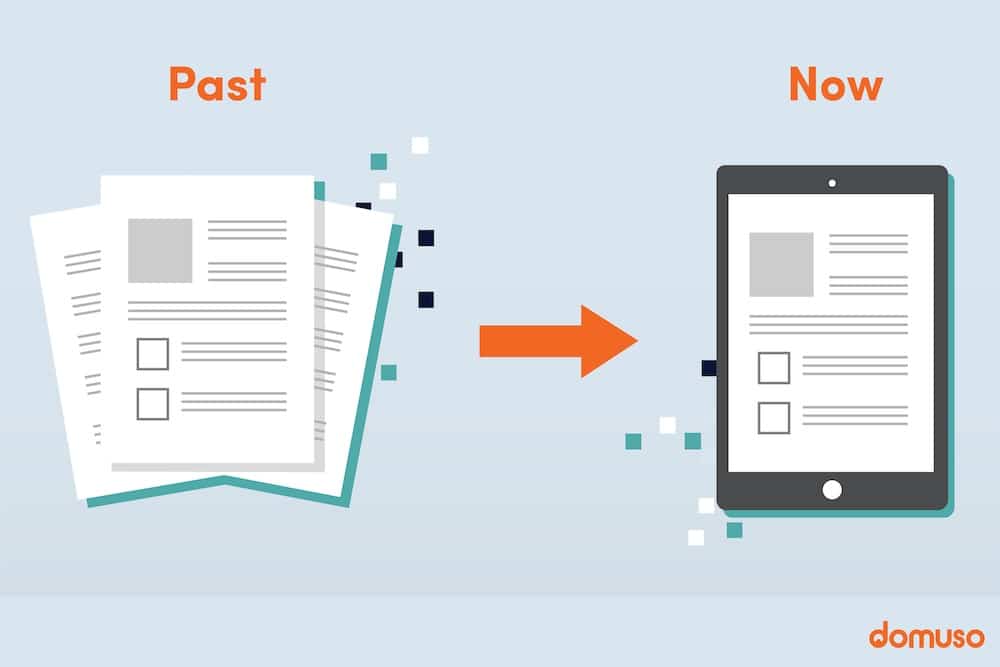Electronic payments have become so pervasive we barely give it a second thought. We use digital wallets to split tabs and pay friends, we buy coffee with mobile apps, and we have come to expect our credit cards to be accepted worldwide. So why don’t more property managers accept rent payments online?
In one study, 93 percent of property management professionals surveyed said it is “important for their organizations to collect rent electronically.” And truthfully some property management groups do push digital payments, but as an industry over 80 percent of rent payments are still collected by paper checks, according to the Federal Reserve Bank of Boston.
Domuso set out to discover why the multifamily rental industry has been so slow to implement online payments.
Why the Industry Seems Behind
Lease Agreements Need to Get Updated
Making the decision to eliminate paper payments often times requires changing lease agreements to reflect these updated policies, procedures and acceptable forms of payment. For properties with hundreds or thousands of residents, this can be a time-consuming exercise. Rather than make the lease change portfolio-wide all at once, some managers also choose to implement this change over one or two years making lease updates as new leases and lease renewals get signed.
New Technology Strategy is Required
Quickly bringing resident communication, services and payments into the digital age require property management companies to increasingly think and act like nimble technology firms. This is unfamiliar territory for most, and executing a more agile technology model means moving past a “one big project per year” mindset and toward a strategy that allows for smaller and more rapid software deployments to enable best-of-breed technology to get quickly to the front lines. Transitioning to an agile technology strategy also means new team skill-sets and roles are likely required for many property management groups. For example, this may mean creating a chief technology officer role or hiring a data-architecture specialist. Or a firm might invest in tech-savvy product managers so they can coordinate strong programs designed to quickly test, cultivate and incorporate (or abandon) new services by engaging multiple small user-groups or regional teams simultaneously.
Limited Bandwidth and Competing Priorities
Most property management executives recognize that new automation and payment technology generates cost savings that increase net operating income over time. And yet, in any large organization, there are competing priorities, and it’s easy to postpone upgrading payment technology when rent growth has been strong and property staff remains an effective short-term alternative. Streamlining operations for a large company takes planning and resources bandwidth and this must be balanced against prioritizing growth, revenue, staffing, training, and external market conditions.
Residents Want a Personalized Touch
Recent consumer trends suggest not everyone is eager to adopt all-digital payments and that a “one size fits all” technology approach can backfire. For example, low income and elderly renters may not be digitally savvy — up to 25% of the United States is considered “underbanked” and may prefer cash transactions — and other residents simply may just be set in their ways. Millennials, for example, may prefer native apps, while other residents may prefer online bill-pay. The complexity of resident financial needs and digital preferences makes properties cautious about quickly implementing new policies without careful consideration.
Local and State Laws are Complicated
Some cities and states require landlords to accept at least one form of payment that is neither cash nor electronic funds transfer, and in many cases, legal guidance has not caught up to the latest technology trends. Properties in these jurisdictions must invest the research necessary to navigate these laws to avoid potential legal exposure, or may facing unfair housing and discrimination lawsuits stemming from residents who lack access to a computer or digital banking services.
Getting There Will Require Collaboration
While these are all very real factors, none of them precludes any company from going digital. And property management firms don’t need to carry the burden entirely on their shoulders. Part of technology vendors’ role is to help navigate these important issues and to support their clients throughout the transition.
Property management firms who take the initiative to implement digital payment and communication methods will improve the quality of service to residents while reducing staff turnover and training costs, making themselves more nimble. Ultimately, they will be rewarded through improvements in operational efficiency and net operating income, which will sharpen their competitive advantage and drive long-term growth.
Ready to chat about how Domuso can help your organization? Request a demo today.
Request Demo

